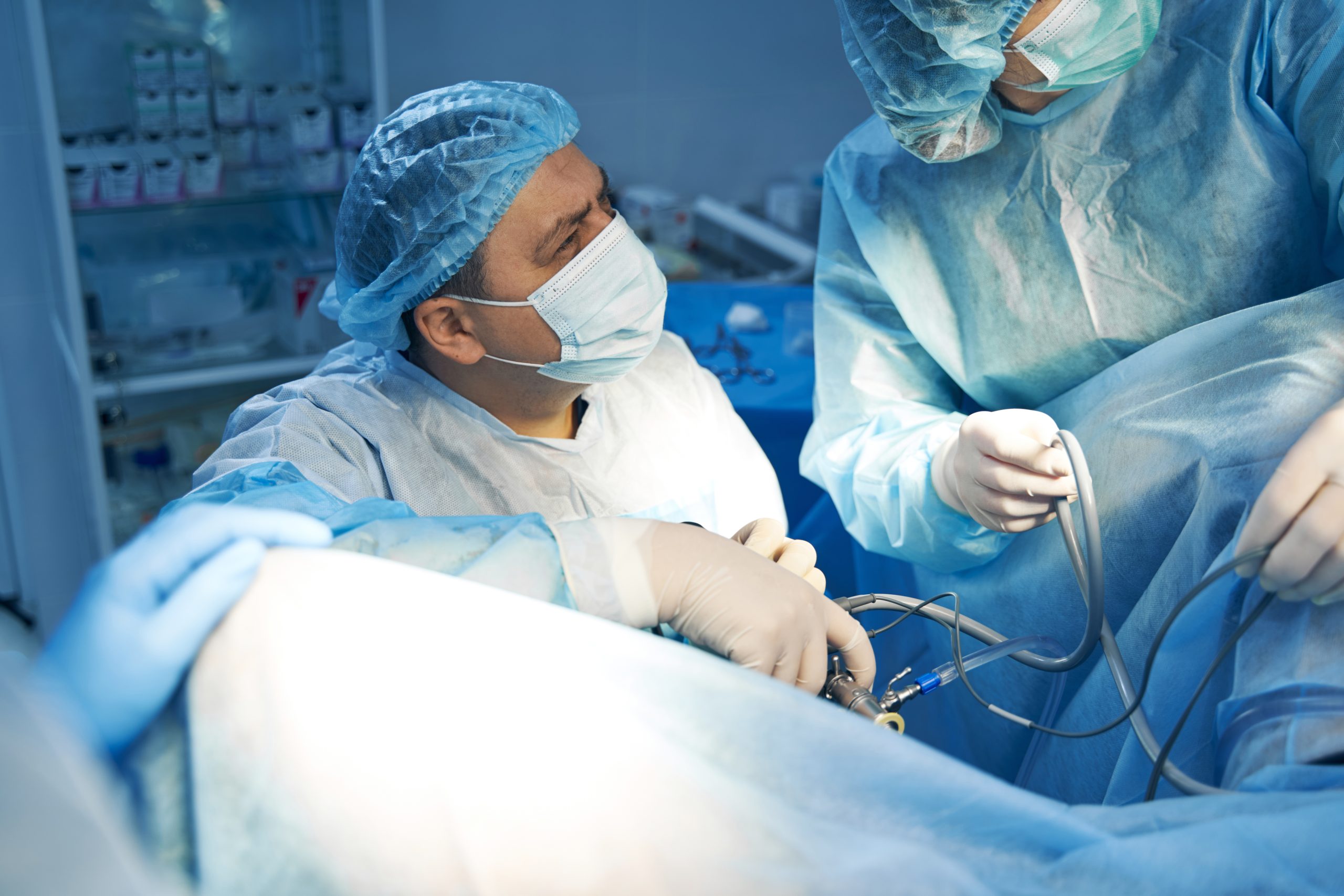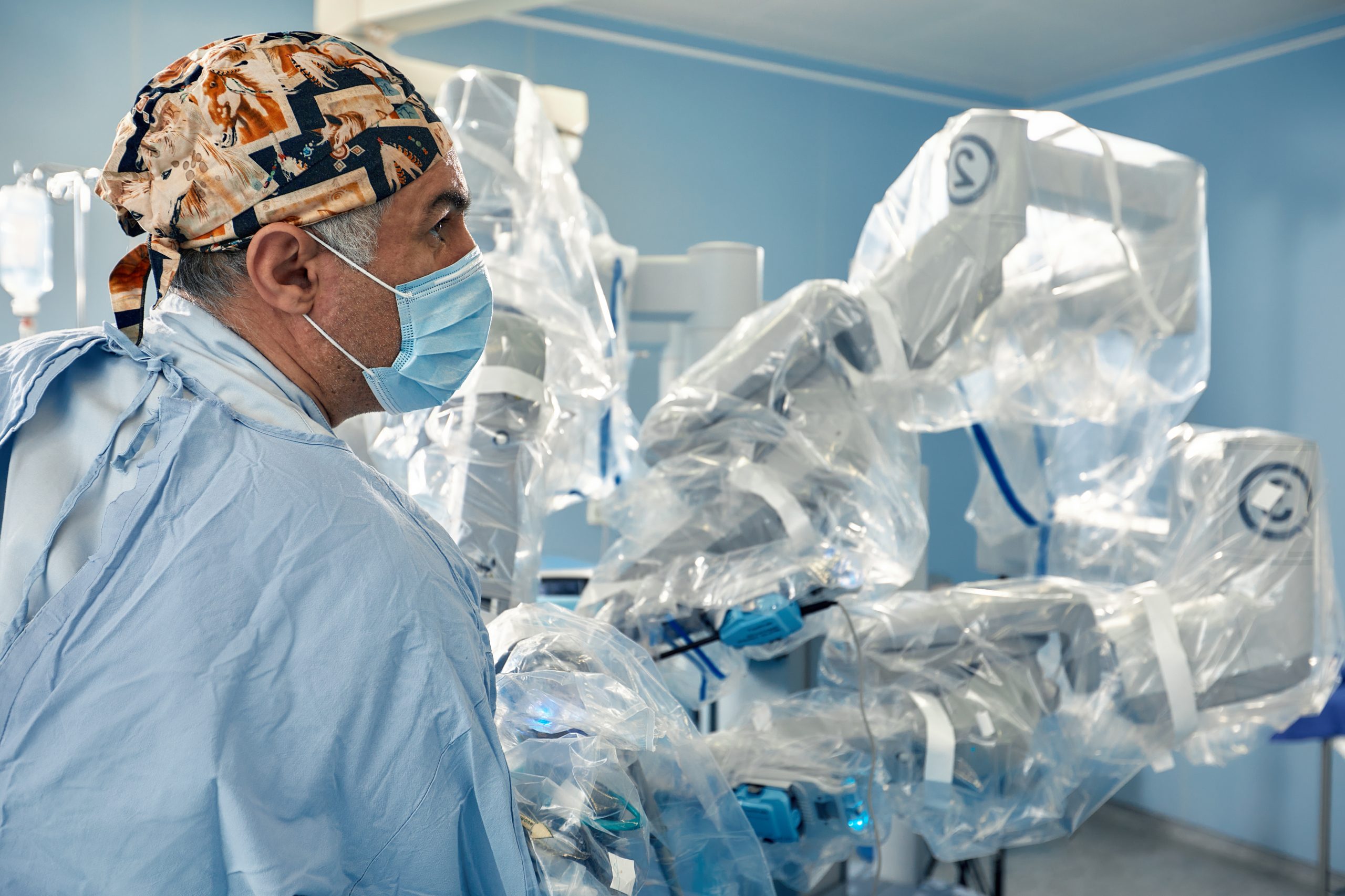
Minimal Access Surgery
Minimal Access Surgery
Advanced technologies and the world-class skillset of Dr. Jacob combine to provide our patients safer surgeries with less pain and a quicker recovery process.

Minimal access techniques have revolutionized the surgical field, particularly in the last quarter century. These surgeries involve small incisions — less than one inch in length — instead of the large ones typically affiliated with “open” surgical procedures. Minimal access surgeries, also known as laparoscopic or keyhole, are significantly safer and more tolerable for patients while providing a shorter recovery time.
Dr. Saji Jacob — GoFertility’s program, medical and lab director who was certified by the American Board of Bioanalysis as a high-complexity clinical lab director in 2018 — is a certified robotic surgeon. He is a national proctor for training doctors across America in robotic gynecological procedures, having completed more than 20 OB/GYN proctors during his distinguished career. Dr. Jacob specializes in complex gynecological procedures at GoFertility such as:
- Advanced-stage endometriosis
- Myomectomies or fibroid removal surgery
- Ovarian cyst removal
- Tubal microsurgical reanastomosis
- Complex hysterectomies
How Minimal Access Surgery is Performed
Unlike an open surgery, minimal access surgery requires one or more small incisions, also called “ports,” for Dr. Jacob to work through. The size and location of the ports will vary depending on a given surgery, but extensive cuts through the skin, muscle, tissues and nerves that result in a long recovery time are eliminated.
Once the incision(s) are made, Dr. Jacob inserts narrow tubes into the ports followed by surgical instruments and a tiny video camera. Dr. Jacob gently and carefully moves the instruments while a live video feed is sent to a large monitor for him to view. CO2 gas gets sent to your abdomen to expand the area, providing extra room for Dr. Jacob to operate.




Benefits of Minimal Access Surgery
Minimally invasive surgeries have several advantages over their more conventional surgery counterparts. Some of the top reasons to consider minimal access surgery include:
- Pain reduction: Dr. Jacob typically doesn’t need to cut through muscles or other tissues to complete the procedure
- Safety: Minimally invasive surgeries result in less loss of blood and a lower chance of an infection developing
- Less scarring
- Fewer complications
- Faster recovery: Postoperative recovery can be reduced by days or even weeks thanks to the technological advantages of minimal access surgery
While the risks associated with minimal access surgery are lower than traditional surgeries, side effects and complications are possible. We encourage discussing your questions and concerns with Dr. Jacob, and he will take the time to educate you and navigate you through your particular operation. Get in touch with our St. Louis office at 314-473-1285 or email AGraham@GoFertility.com to get the conversation going.
Obese patients often find minimally invasive surgeries especially attractive as long cuts on large portions beneath the skin are avoided, limiting the potential for infections. Older-aged individuals can avoid long recovery periods in hospital beds, resulting in fewer complications such as blood coagulation in the legs. Those with chronic pain won’t have to cope with large incisions that require more medicine to tolerate.
Dr. Jacob and our team of professionals are here to answer your questions with clarity, detail and compassion. We will work with you to determine the best treatment that fits your condition and comfort level. We offer a comprehensive suite of advanced surgical techniques for cases that are both routine and complex. We’re here to help get you on the mend, and we look forward to the opportunity to serve you.